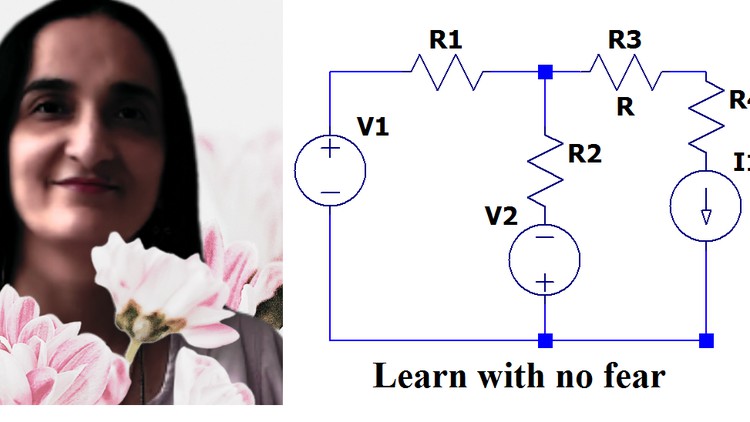
Electrical Circuit Analysis (Common for all Engineering Disciplines)
What you will learn
Basics of DC circuits, ,
Easy and interesting ways to solve the problems on electric circuits
Combination of series and parallel resistances
Voltage and current division
Use of various advanced theorems in solving complicated networks
Description
- The course is focused on learning DC basics/networks and doing circuit analysis quite easily and without any fear. A network is supposed to be completely solved or analyzed when all voltages and all current in its different elements are evaluated or computed properly. Circuit analysis is the process of determining voltage across (or the current through) the elements present in the circuit (using Ohm’s law, Kirchhoff’s voltage law (KVL), Kirchhoff’s current law (KCL), nodal analysis, branch and mesh analysis, source transformation method, various important and fundamental theorems (such as Thevenin’s theorem, Norton’s theorem, Superposition), Star to Delta and Delta to Star transformation techniques). The course is intended to give a deep understanding of theory based on how to obtain steady state solution of DC circuits. It provides the basic knowledge for simplifying complex circuits and solving them analytically in a quite easy and effective way by applying network theorems. To apply fundamental theorems, a thorough understanding of each theorem is very much needed because analyzing of complex electrical and electronic circuits require these theorems very much. It provides numerous solved examples explained in detail and very easy way for a better understanding of the students. It also contains downloadable resources and assignments for practice. I assure the students that the course proves to be very useful to them and is of great help to all first year students.
English
language
Content
Introduction: about the course, about the instructor
Course objective, glimpse of Characteristics of Series and Parallel Connection
About the Instructor
Voltage and current divider rules for n resistors
Example 1 (using voltage and current divider rule)
Section 2: Kirchhoff’laws and their applications in solving electric circuits
KVL AND KCL
Sign conventions for using KVL
Branch current versus mesh current method
Example 3: using branch current method
Example 4: Mesh analysis
SuperMesh technique: mesh analysis of a circuit having a current source
Various powerful advanced techniques for solving complex circuits quickly
Source transformation
Superposition theorem
Circuit Problem (i) on superposition theorem
Thevenin theorem
Problem on Thevenin
Nortons theorem with example
Wye/Delta Transformations
Examples on Wye/Delta transformations